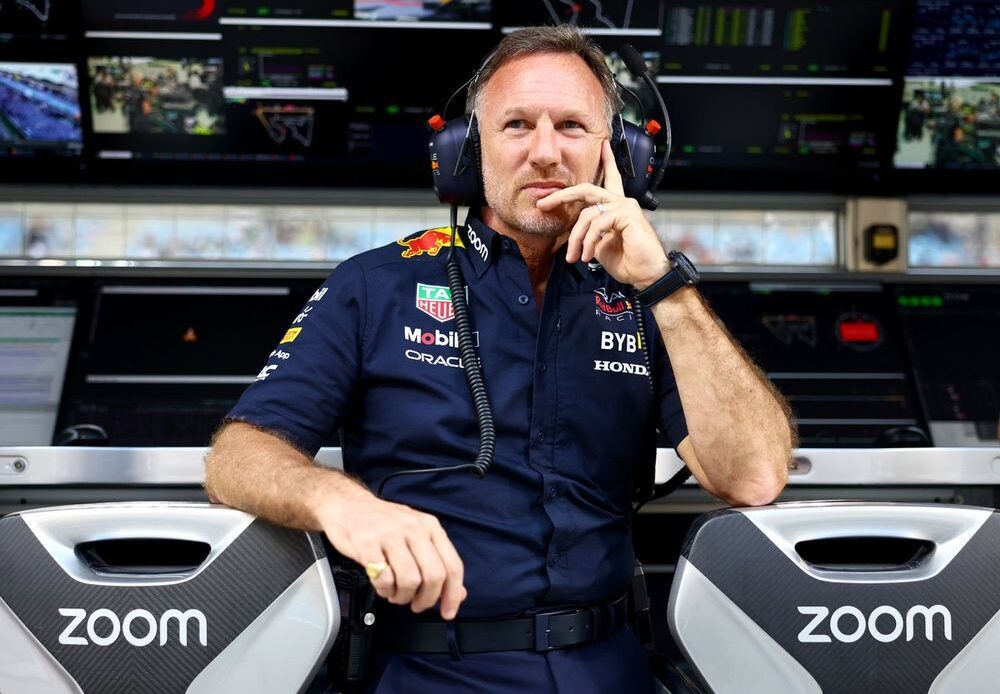After the two squads that fought for the 2021 world titles ended up racing in very different parts of the F1 pecking order at the start of the new ground-effect era, there was much expectation that Mercedes – along with Ferrari – might be able to close the gap to Red Bull’s new position as the championship’s dominator.
Both teams eventually adopted Red Bull’s downwash sidepod concept as the end of the 2023 campaign’s first half approached, but Horner told Motorsport.com in an exclusive interview at the Abu Dhabi season finale that his team had been surprised to see Mercedes and Ferrari had not taken that approach during the winter.
When asked if his team had been left feeling positive when Mercedes team boss Toto Wolff announced that his squad would be abandoning the W13/W14 car concept with the ‘zeropod’ sidepods at 2023’s first race, Horner replied: “Well, Toto tends to be a little dramatic anyway.
“I think what surprised us was that Ferrari had a very good car last year. And the natural evolution of that we expected it to be a very tight contender this year.
“We were very surprised to see Mercedes sticking with the concepts that had clearly failed the previous year.
“If you looked around the cars in pre-season, the cars that were closest in concept to us were the Aston Martin and McLaren.”
Photo by: Red Bull Content Pool
Christian Horner, Team Principal, Red Bull Racing
Horner also insisted Red Bull only began to feel it had the best chance to win both F1 world titles for the second season in succession when Max Verstappen won in Melbourne.
The Australian event was one where Red Bull was comprehensively defeated by Ferrari’s Charles Leclerc in 2022 and so to do the reverse to all its rivals one year later, Horner said it provided his team with the confirmation it had been seeking about its overall chances for the year ahead.
“Certainly, coming out of Bahrain, we felt like, ‘we’ve got a really good package here’,” he explained. “But we didn’t know whether it was circuit specific – temperature, conditions, asphalt.
“So, it’s only when you’ve had a sample of two or three and you’ve gone to a couple of circuits that have been more troublesome, certainly for us the previous year, like Melbourne for example, that suddenly you’re thinking, ‘ok, no, this is really together’.
“And so yeah, it takes a sample of a few races to get a clear overview. Nobody was coming out of…
Click Here to Read the Full Original Article at Motorsport.com – Formula 1 – Stories…

